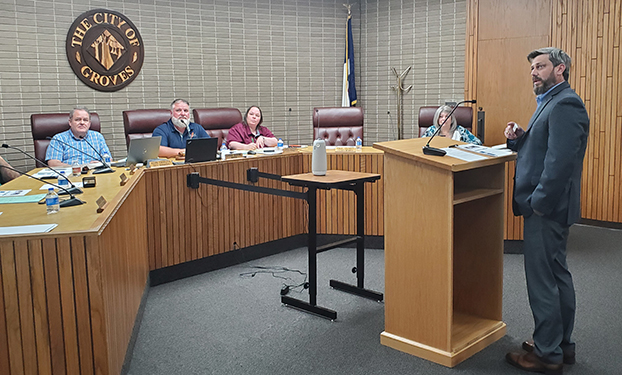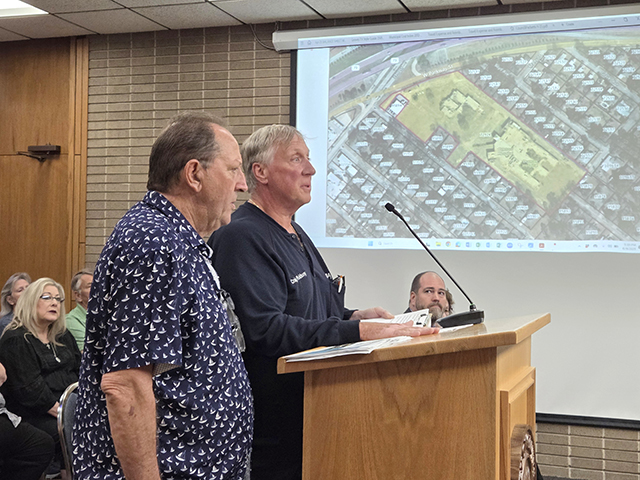Groves leaders consider changes to water rates
Published 1:58 pm Thursday, June 20, 2024

- Matthew Garrett, project manager with NewGen Strategies & Solutions, presents information on a water and wastewater rate study to Groves City Council Monday. (Mary Meaux/The News)
|
Getting your Trinity Audio player ready...
|
GROVES — Leaders in Groves are looking to accomplish something that some other cities have yet to do, create a way for their water and sewer funds to build up reserves in order top tackle capital improvements and build up cash reserves.
Matthew Garrett, project manager with NewGen Strategies & Solutions, presented findings from a water and wastewater rate study to council Monday thus giving them options well ahead of budget planning season.
Garrett explained the objective of the study is to design a rate plan to meet rising costs over five years, fund more than $20 million in capital improvements, build up cash reserves to 180 days of operating costs over five years ad introduce tiered water rate to promote water conservation.
Built into the plan is inflation, salary increases and the fact the Lower Neches Valley Authority, where the city buys water rom, increases their rates periodically.
The plan would use a different set of units. For example, volumetric charges for 1,001 to 5,000 gallons is currently $3.70. By 2025 that would increase to $4.81, by 2026 it would be $5.60. By 2029 that number would be $7.05.
The more volume a customer uses the more the bill would rise.
NewGen built in a 25 percent tier rate increase between successive tiers.
Bill impact would be varied. Looking only at water and wastewater (excluding garbage), a minimum bill of $51.40 would increase to $64.93 in 2025, $75.51 in 2026, $88.02 in 2027, $91.35 in 2028 and $94.77 in 2029. These numbers are for a customer using 4,000 gallons.
Residential and commercial customers using 10,000 gallons would see an increase from $103.60 in2024 to $138.79 in 2025. That increases to 2029 with a raise of $203.11.
Concern on whether big water customers would curtail their usage due to the increase in their bill was discussed and is something that could happen. But then again, for residential users, not many would be willing to cut back on baths and flushing the toilet.
No decision was made during Monday’s meeting.





